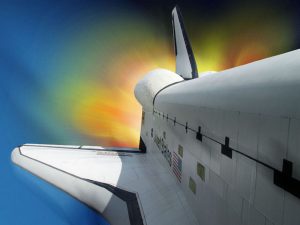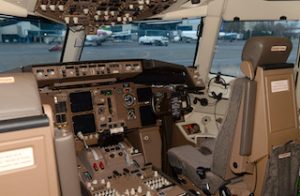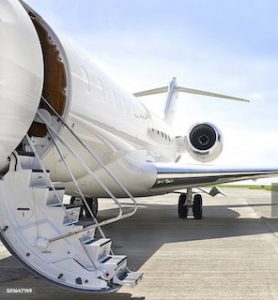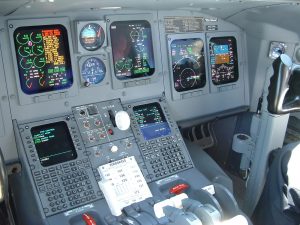An Overview Of Air Traffic Management
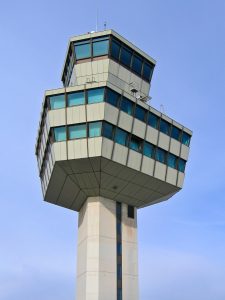 Air traffic management is a crucial aspect of modern aviation, ensuring the safety, efficiency, and reliability of air travel. As global air traffic continues to increase, the need for sophisticated ATM systems has never been more vital. This article delves into the various components of air traffic management, its significance, the technologies involved, and future trends shaping the industry.
Air traffic management is a crucial aspect of modern aviation, ensuring the safety, efficiency, and reliability of air travel. As global air traffic continues to increase, the need for sophisticated ATM systems has never been more vital. This article delves into the various components of air traffic management, its significance, the technologies involved, and future trends shaping the industry.
Air traffic management
Air traffic management refers to the processes and technologies used to manage the flow of aircraft in the sky and on the ground. It encompasses a wide range of services, including air traffic control, airspace management, and aeronautical information services. The primary objective of ATM is to prevent collisions between aircraft, ensure safe landings and takeoffs, and optimise the use of airspace to accommodate the growing volume of air traffic.
Importance of air traffic management
As air travel becomes increasingly popular, the importance of efficient air traffic management cannot be overstated. In 2019, the International air transport association reported that more than 4.5 billion passengers traveled by air. This trend is expected to continue, with predictions of a doubling of air traffic by 2037. As such, effective ATM systems are essential for:
- Safety: The foremost priority of ATM is to ensure the safety of passengers and crew. By monitoring aircraft movements and providing timely instructions, air traffic controllers help prevent mid-air collisions and ensure safe landings and takeoffs.
- Efficiency: Efficient air traffic management reduces delays and optimizes flight routes, which in turn lowers fuel consumption and minimises environmental impact. By streamlining operations, airlines can improve their schedules and enhance passenger satisfaction.
- Capacity: As more aircraft take to the skies, ATM systems must adapt to accommodate this growth. Effective management of airspace allows for increased capacity without compromising safety.
Components of air traffic management
Air traffic management is composed of several key components, each playing a critical role in ensuring seamless aviation operations.
1) Air traffic control
Air traffic control is perhaps the most well-known aspect of ATM. ATC services provide instructions to pilots to ensure safe and orderly movement of aircraft. This includes managing takeoffs, landings, and en route navigation. ATC is typically divided into three main categories:
-
- Tower control: This service operates at airports, managing aircraft on the ground and in the immediate vicinity during takeoff and landing
- Approach control: This service manages aircraft as they approach an airport, guiding them to a safe and efficient landing
- En route control: This service oversees aircraft flying between airports, maintaining safe distances and efficient flight paths.
2) Airspace management
Airspace management involves the planning and organization of airspace to optimize its use. This includes the classification of airspace into different categories, each with specific rules and regulations governing its use. Airspace can be controlled or uncontrolled, and its management is critical for ensuring that aircraft can operate safely and efficiently.
3) Aeronautical information services
Aeronautical information services provide essential data to pilots and air traffic controllers. This includes information about airspace structure, weather conditions, and navigation aids. By ensuring that all stakeholders have access to accurate and up-to-date information, ATM enhances the safety and efficiency of air travel.
Technologies in air traffic management
The evolution of air traffic management has been significantly influenced by advancements in technology. Several key technologies have been integrated into ATM systems to improve their efficiency and effectiveness.
1) Surveillance systems: Surveillance systems are crucial for monitoring aircraft movements. Traditional radar systems have been complemented by newer technologies such as Automatic Dependent Surveillance-Broadcast (ADS-B). ADS-B allows aircraft to broadcast their position and velocity, enabling air traffic controllers to maintain better situational awareness.
2) Communication systems: Effective communication between pilots and air traffic controllers is essential for safe operations. The introduction of data link communication systems, such as Controller-Pilot Data Link Communications, allows for the exchange of messages without the need for voice communication, reducing misunderstandings and enhancing clarity.
3) Navigation systems: Navigation technologies play a vital role in ensuring that aircraft follow safe and efficient flight paths. Global navigation satellite systems, such as GPS, have revolutionised navigation by providing accurate positioning information. This has enabled the development of more precise flight procedures, allowing for reduced separation between aircraft and more efficient use of airspace.
4) Automation and decision support tools: The integration of automation and decision support tools has transformed the way air traffic controllers manage air traffic. These tools assist controllers in making informed decisions by providing real-time data and predictive analytics. This helps in identifying potential conflicts and optimizing traffic flows.
Challenges in air traffic management
Despite the advancements in technology and processes, air traffic management faces several challenges. Understanding these challenges is essential for improving ATM systems and ensuring their continued effectiveness.
- Increasing air traffic volume: As previously mentioned, the volume of air traffic is projected to double in the coming decades. This exponential growth poses significant challenges for air traffic management systems, which must adapt to handle increased demand while maintaining safety and efficiency.
- Environmental concerns: The aviation industry is under increasing pressure to reduce its environmental impact. Air traffic management plays a critical role in addressing these concerns by optimizing flight routes and reducing fuel consumption. However, achieving sustainability while accommodating growth remains a complex challenge.
- Technological integration: While technology has enhanced ATM systems, the integration of new technologies into existing infrastructure can be challenging. Ensuring compatibility between legacy systems and modern solutions is essential for achieving seamless operations.
- Cybersecurity threats: As ATM systems become more reliant on digital technologies, the risk of cyberattacks increases. Ensuring the security of ATM systems is paramount to maintaining safety and operational integrity. Robust cybersecurity measures must be implemented to protect against potential threats.
Future of air traffic management
The future of air traffic management is set to be shaped by several emerging trends and technologies. As the industry evolves, it will be crucial to embrace these changes to meet the challenges of tomorrow.
- NextGen and SESAR initiatives: In the United States, the Federal aviation administration is working on the Next generation air transportation system, a comprehensive overhaul of the nation’s air traffic management infrastructure. Similarly, the Single European Sky ATM Research (SESAR) initiative aims to modernize air traffic management across Europe. Both initiatives focus on enhancing efficiency, safety, and environmental sustainability.
- Integration of unmanned aerial systems: The rise of unmanned aerial systems presents new opportunities and challenges for air traffic management. As UAS operations expand, ATM systems must evolve to integrate these aircraft safely into the existing airspace. Developing regulatory frameworks and technological solutions will be essential for achieving this integration.
- Advanced data analytics and artificial intelligence: The application of advanced data analytics and artificial intelligence in air traffic management has the potential to revolutionise the industry. By harnessing large datasets, AI can enhance predictive capabilities, optimize traffic flows, and improve decision-making processes. The integration of machine learning algorithms can lead to more efficient and effective air traffic management systems.
- Emphasis on sustainability: As the aviation industry seeks to reduce its carbon footprint, air traffic management will play a crucial role in promoting sustainability. This includes implementing green flight procedures, optimizing routes to minimize fuel consumption, and enhancing collaboration between stakeholders to develop environmentally friendly practices.
Conclusion
Air traffic management is a complex and vital aspect of modern aviation, ensuring the safe and efficient movement of aircraft around the world. As air traffic continues to grow, the importance of effective ATM systems becomes increasingly apparent. By understanding the various components, technologies, and challenges associated with air traffic management, stakeholders can work together to enhance safety, efficiency, and sustainability in the aviation industry. Embracing future trends and innovations will be key to meeting the evolving demands of air travel in the years to come.

